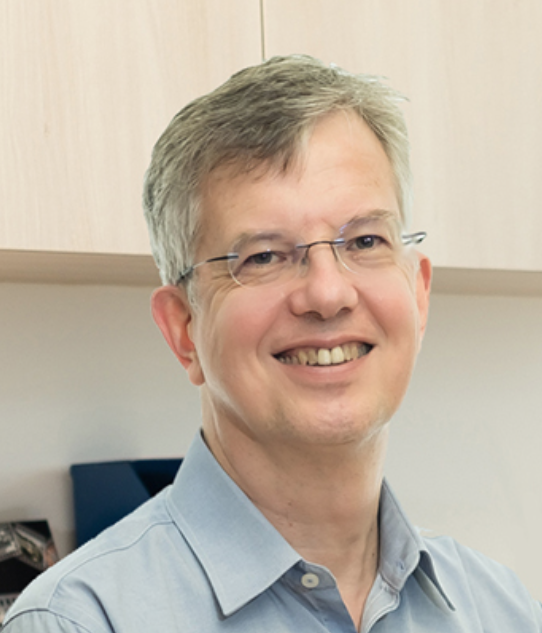Presentation by Thorsten Wohland, Professor in the Departments of Biological Sciences and Chemistry and the Director of the Centre for Bioimaging Sciences at the National University of Singapore (NUS), Singapore.
The development of antibiotics resistance requires the development of new antibacterial compounds that are less prone to the development of resistance by bacteria. However, how antimicrobials act on bacteria is still an active field of investigation and how biofilms allow bacteria to withstand antimicrobial action is not understood. Addressing these questions requires novel techniques that allow to measure with single molecule sensitivity to elucidate molecular action mechanisms but that also cover large fields of view to investigate biofilm-wide effects.
Fluorescence Correlation Spectroscopy (FCS) is a single molecule sensitive technique that can determine concentrations and molecular mobilities with high spatiotemporal resolution. As Imaging FCS, using fast, sensitive cameras, it can provide diffusion coefficient and concentration maps over whole cross-sections of a sample. FCS thus provides the necessary means to observe antimicrobial dynamics at the bacterial and biofilm level.
In this seminar we will investigate the effect of antimicrobials on bacterial membrane integrity as well as the diffusion of antibiotics and antimicrobial peptides within biofilms of different composition. Our results demonstrate that we can obtain dose response curves of antimicrobials on live bacteria within less than 30 minutes and observe 3D diffusion coefficient maps on biofilms to investigate the influence of the extracellular polymeric substance (EPS) on molecular dynamics of antimicrobials within biofilms of different bacteria and EPS composition.
References
1.Sankaran, J. et al. Single microcolony diffusion analysis in Pseudomonas aeruginosa biofilms. npj Biofilms and Microbiomes 5, 95–37 (2019).
2.Zhu, S., Wang, Y., Chong, S. M. S. & Wohland, T. A Live Bacterial Screening Assay for Membrane-Active Antimicrobial Compounds Using Imaging Fluorescence Correlation Spectroscopy. Anal. Chem. (2025) doi:10.1021/acs.analchem.4c05698.
3.Sousa, A. et al. Decoding interactions between biofilms and DNA nanoparticles. Biofilm 9, 100260 (2025).
Bio

Thorsten Wohland is a Professor in the Departments of Biological Sciences and Chemistry and Director of the Centre for Bioimaging Sciences at the National University of Singapore (NUS) in Singapore.
He studied Physics at the Technical University of Darmstadt and the University of Heidelberg in Germany from 1989-1995. He completed his diploma thesis in physics at the European Molecular Biology Laboratory (EMBL) in Heidelberg, Germany, where he worked on the influence of light polarization on the forces in optical tweezers under the supervision of Ernst H.K. Stelzer. In 1997 he joined the research group of Prof. Horst Vogel at the Swiss Federal Institute of Technology in Lausanne (ETHL/EPFL), Switzerland.
In the year 2000 he obtained his doctoral degree in the field of biophysics for the study of theoretical and practical aspects of fluorescence correlation spectroscopy (FCS) and its application to integral membrane proteins. Following another two years in the group of Richard N. Zare at Stanford in the USA working on single molecule detection and protein immobilization he started as Assistant Professor at the NUS in June 2002.
At NUS he developed several new fluorescence correlation spectroscopy methods, imaging total internal reflection fluorescence correlation spectroscopy (ITIR-FCS), single plane illumination microscopy FCS (SPIM-FCS), and single wavelength fluorescence cross-correlation spectroscopy (SW-FCCS), which allowed for the first time to take correlation images of live cells and quantitatively measure affinity constants of bimolecular interactions in live organisms, respectively.
His current research aims at the integration of fluorescence microscopy and spectroscopy to yield quantitative microscopy methods that can extract information with high spatial and temporal resolution and the application of these methods to biological problems.